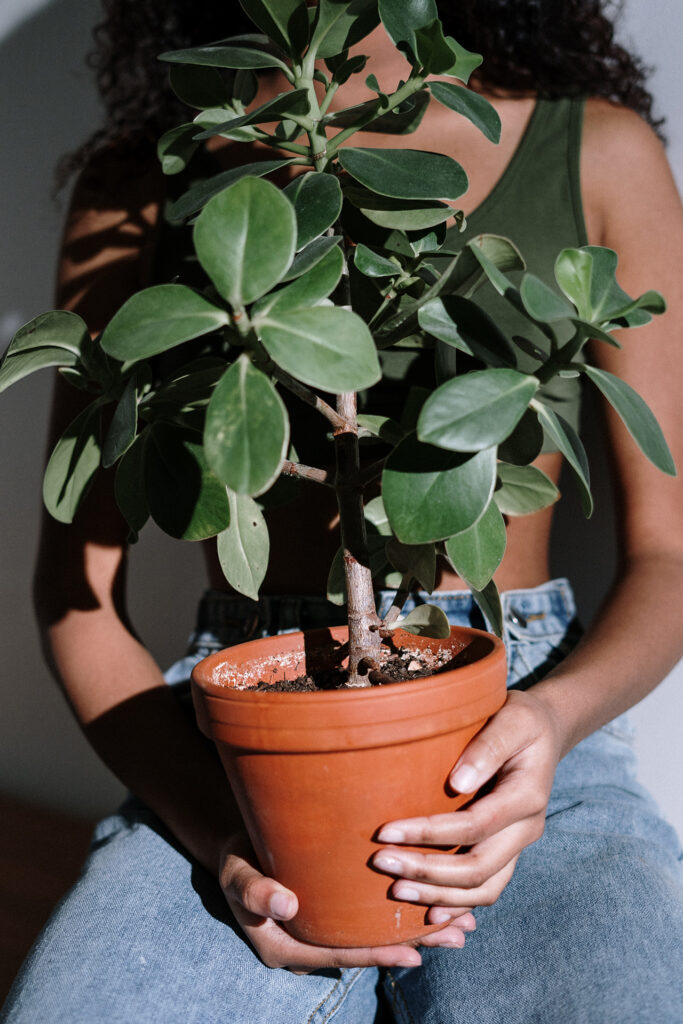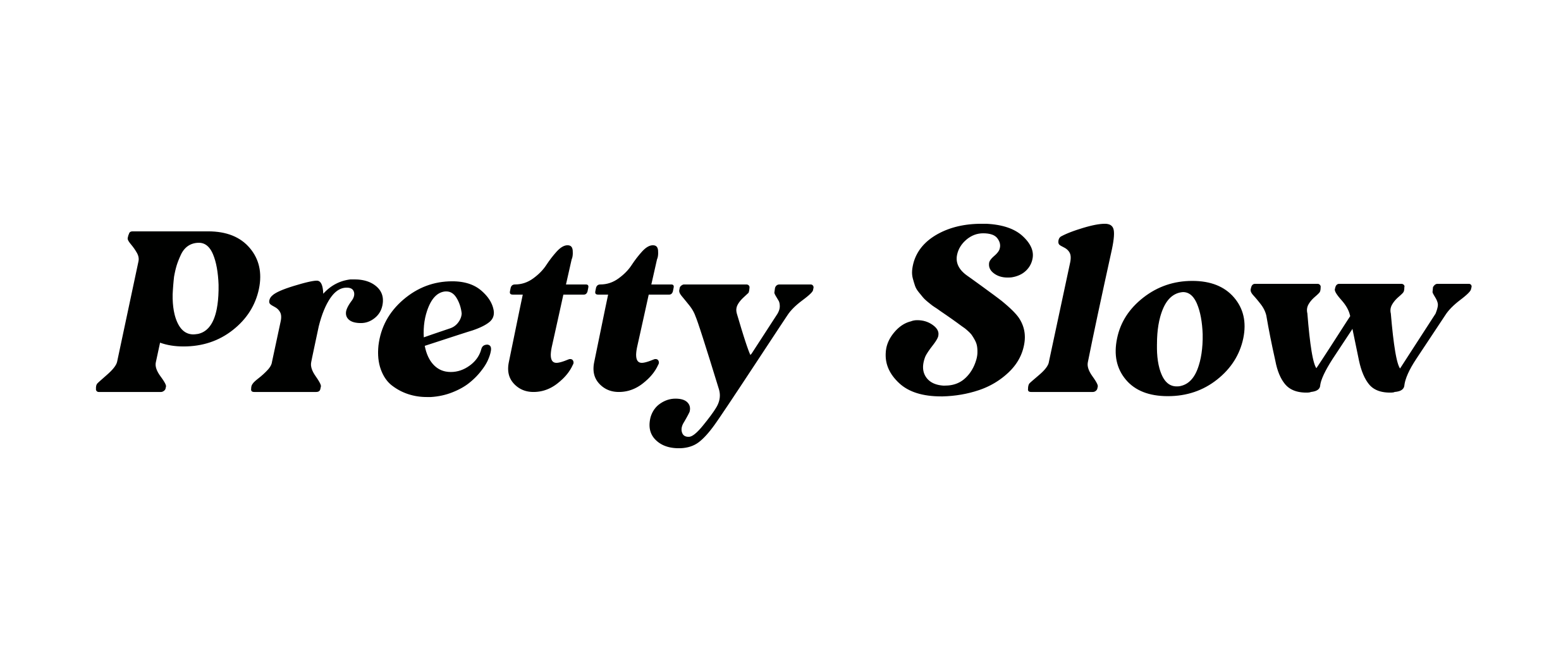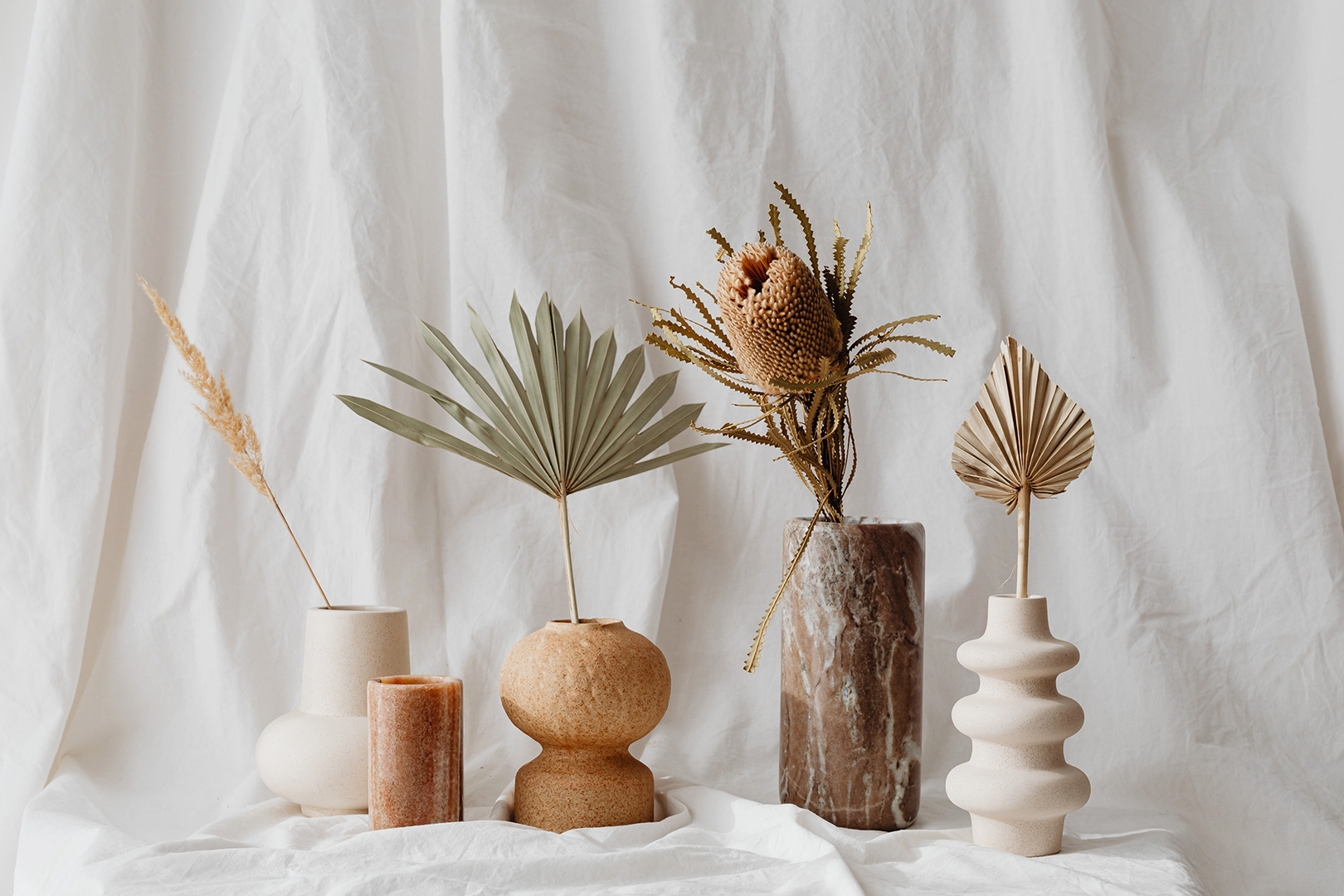In today’s fast-paced world, bombarded by advertisements, technology, and consumer culture, a growing movement is making its presence known – minimalism. At its core, minimalism is about living with intentionality, choosing quality over quantity, and embracing simplicity in various aspects of life.
Contrary to misconceptions, minimalism isn’t solely about owning a certain number of items or living in a stark white environment. It’s about understanding what truly adds value to one’s life and letting go of distractions. For some, this might mean decluttering possessions; for others, it’s about decluttering thoughts, relationships, or commitments.
A significant driver behind the minimalist movement is the increasing realization that incessant consumption doesn’t equate to happiness. In many societies, there’s an unspoken notion that acquiring more – whether it’s clothes, gadgets, or even experiences – will lead to increased happiness. Yet, many find that the continuous pursuit of ‘more’ often leads to feelings of emptiness and dissatisfaction. Minimalism challenges this narrative, positing that by focusing on what genuinely matters, we can find contentment and purpose.
Embracing minimalism can have profound impacts on mental well-being. In a cluttered space or life, it’s easy to feel overwhelmed, anxious, or trapped. By intentionally reducing excess, individuals often report feeling lighter, more focused, and more at peace. Each item or commitment that remains holds purpose and meaning.
The environment, too, stands to benefit from minimalist principles. Overconsumption is a primary culprit behind many environmental issues, from resource depletion to waste accumulation. By making conscious choices – for instance, buying fewer but longer-lasting items – we reduce demand on finite resources and the stress we place on the environment.
However, while the principles of minimalism sound appealing, the journey isn’t always straightforward. In a society where one’s worth is often equated with material possessions or busyness, choosing the minimalist path can be met with misunderstanding or scepticism.
Yet, minimalism is adaptable; it isn’t a one-size-fits-all doctrine but a spectrum. Some minimalists live with fewer than 100 items, while others maintain larger collections but do so intentionally. What’s consistent is the underlying philosophy: life is more fulfilling when we focus on what truly matters.
Across the world, manifestations of minimalism vary, reflecting cultural, economic, and individual differences. In Japan, for instance, the concept of ‘Ma’ – valuing the (empty) space between things – has long been appreciated. The West’s interpretation of minimalism, popularized through blogs, documentaries, and books, often emphasizes decluttering and intentional living.
For businesses, minimalism has significant implications. In design, the minimalist approach values function and simplicity, leading to products and spaces that are both aesthetically pleasing and highly functional. In strategy, businesses can benefit from streamlining processes, focusing on core competencies, and delivering genuine value.
Minimalism is a powerful antidote to today’s consumer-driven world. By embracing its principles, we can find clarity, contentment, and a renewed appreciation for what truly enriches our lives. As the minimalist saying goes, “Less is more.” In seeking less – less clutter, less distraction, less excess – we open the door to more: more joy, more purpose, and more meaningful connections.
Table of Contents
What is minimalism?
Minimalism is both a philosophy and a lifestyle characterized by simplicity, intentionality and a focus on essentials. At its core, minimalism seeks to strip away excess and distractions in various aspects of life — whether that’s in physical possessions, relationships, activities, or even thoughts — to prioritize what truly adds value and meaning. Here are the main facets of minimalism:
- Simplicity: Minimalism often emphasizes pared-down aesthetics and straightforward designs, but this simplicity also extends to other areas of life, like simplifying routines or commitments.
- Intentionality: It’s not just about having less; it’s about having more of what you truly value. Every possession, activity, or commitment is deliberately chosen for its significance.
- Focus on Essentials: Minimalism encourages recognizing and focusing on what’s truly essential in life. By identifying and prioritizing these essentials, one can let go of the superfluous.
- Decluttering: Whether it’s possessions, relationships, or commitments, minimalism often involves a process of decluttering or letting go of what no longer serves a meaningful purpose.
- Mindfulness: By reducing external distractions, minimalism can foster a greater sense of mindfulness, allowing individuals to be more present in their lives.
- Consumer Awareness: Minimalism often challenges the consumerist mindset, encouraging thoughtful purchases, sustainability, and an awareness of the environmental and societal impacts of one’s choices.
It’s worth noting that minimalism doesn’t have strict rules. It’s a spectrum, and its application varies widely based on individual preferences, values, and circumstances. Some may pursue minimalism by owning few possessions, while others might focus more on decluttering their digital lives or schedules. At its core, minimalism is about living intentionally and finding contentment with less.
What are the benefits of minimalism?
Minimalism offers many benefits, spanning physical, mental, emotional, financial, and environmental dimensions. Here are some of the primary benefits of adopting a minimalist lifestyle:
- Reduced Stress: An uncluttered space often leads to an uncluttered mind. By simplifying one’s environment, routines, and commitments, many people experience reduced stress and anxiety.
- Increased Focus and Productivity: Fewer distractions allow for increased concentration on tasks at hand. This can improve productivity and a clearer sense of purpose in activities.
- Financial Savings: Owning and buying fewer items typically means spending less money. This can help reduce debt, increase savings, and promote financial independence.
- More Time: By cutting back on non-essential commitments and possessions, people often find they have more free time to invest in hobbies, relationships, or self-care.
- Improved Well-being: A simplified environment and lifestyle can improve mental and emotional well-being, leading to a more contented, purposeful life.
- Enhanced Relationships: By prioritizing experiences over possessions, many minimalists find that they have more quality time to spend with loved ones, deepening relationships.
- Greater Flexibility: With fewer possessions to manage or tie them down, individuals can experience greater mobility, making it easier to travel or relocate.
- Environmental Benefits: Consuming less leads to a reduced carbon footprint, less waste production, and decreased resource extraction. Minimalism can be an eco-friendly lifestyle choice.
- Increased Mindfulness: Minimalism often promotes greater awareness of one’s surroundings, choices, and actions, leading to a more mindful existence.
- Enhanced Appreciation: Living with less can cultivate a greater appreciation for what one does have, fostering gratitude and contentment.
- Clarity of Purpose: By stripping away the non-essential, many minimalists report a clearer sense of what truly matters in their lives, guiding their choices and actions.
- Freedom from Consumerism: Breaking free from the cycle of constantly wanting more can bring a profound sense of freedom and independence.
- Simplicity in Decision Making: Fewer possessions and commitments can simplify daily decision-making processes, reducing decision fatigue.
- Improved Health: A minimalist environment is often easier to keep clean, leading to better physical health. Furthermore, reducing stress and increasing free time can encourage healthier lifestyles and choices.
While the benefits of minimalism can be significant, it’s essential to approach it as a personal journey. Not everyone will experience the same benefits to the same degree, and it’s okay to adapt minimalist principles to align with individual needs and values.
How do I start living a minimalist lifestyle?
Starting a minimalist lifestyle is a journey that requires intention, reflection, and consistent effort. While there’s no one-size-fits-all approach, here are some general steps to guide you in adopting minimalism.
Firstly, reflect on your why. Before diving in, take a moment to reflect on why you want to adopt a minimalist lifestyle. Understanding your motivations will give you clarity and purpose as you navigate the process.
Secondly, start slowly. Don’t feel pressured to declutter your entire life immediately. Start with one area, whether it’s a specific room, a category of items (like clothes), or even a digital space (e.g., your email inbox).
- Declutter Possessions:
- Assess Value: For each item, ask yourself if it adds value to your life, if you use it regularly, and if it brings you joy.
- Keep, Donate, or Discard: Decide which items to keep, which to donate, and which to throw away. Remember, the goal is intentionality, not deprivation.
- Avoid the “Just in Case” Trap: Many of us hold onto items just in case we might need them in the future. More often than not, these items go unused and take up valuable space.
- Simplify Digital Life: Declutter your digital spaces — unsubscribe from unnecessary emails, organize your files, and streamline your social media.
- Evaluate Commitments: Assess your calendar and commitments. Can any be eliminated or delegated? Are there activities you participate in out of obligation rather than genuine interest?
- Establish Boundaries: To prevent future clutter, be intentional about what you allow into your life. This could mean setting shopping boundaries, limiting impulse purchases, or being more selective about commitments.
- Adopt a One-In-One-Out Rule: Whenever you bring a new item into your space, consider letting go of an existing one. This practice helps maintain a balance and prevents accumulation.
- Create Minimalist Habits: Daily habits, like regularly assessing clutter spots, can help maintain a minimalist lifestyle in the long run.
- Limit Consumerism: Before making purchases, ask yourself if the item is essential and if it will add lasting value to your life. Emphasize quality over quantity.
- Educate Yourself: Read books and blogs or watch documentaries on minimalism. Learning from others’ experiences can offer insights and motivation.
- Connect with Like-Minded Individuals: Joining minimalist communities, whether online or in-person, can provide support, share experiences, and learn from others on a similar journey.
- Re-evaluate Periodically: Minimalism is an ongoing journey. Periodically review your possessions, commitments, and lifestyle choices to ensure they align with your minimalist goals.
- Embrace the Journey: Remember that minimalism isn’t about achieving a perfect state but about the ongoing process of simplifying and living intentionally. Celebrate small victories and be patient with yourself during challenges.
By following these steps and consistently reassessing your choices, you’ll be well on your way to adopting a minimalist lifestyle that aligns with your values and improves your overall well-being.

What is the difference between decluttering and minimalism?
While decluttering and minimalism share similarities and often intersect, they are distinct concepts with different underlying principles and goals. Here’s a breakdown of the differences between the two:
- Definition:
- Decluttering: This is the process of removing unnecessary items from an area to make it more organized and functional. Decluttering focuses on paring down possessions and creating a tidier, more manageable environment.
- Minimalism: This is a broader lifestyle philosophy emphasizing living with less to make room for more meaningful experiences and relationships. Minimalism extends beyond physical possessions to include simplifying commitments, relationships, and other aspects of life.
- Scope:
- Decluttering: Typically focuses on tangible items and spaces, such as clearing out closets, basements, or desks.
- Minimalism: Encompasses a wider range of life areas, including possessions, time management, digital presence, relationships, and personal commitments.
- Frequency:
- Decluttering: Can be a one-time event or something done periodically when things become too cluttered.
- Minimalism: Is an ongoing lifestyle choice, where continuous reflection and intentionality guide decisions and actions.
- End Goal:
- Decluttering: The primary goal is to create organized, functional spaces by eliminating excess.
- Minimalism: The overarching aim is to lead a more intentional, fulfilling life by prioritizing what truly matters and eliminating the superfluous.
- Motivation:
- Decluttering: People often declutter to find specific items more easily, reclaim lost space, or create a more aesthetically pleasing environment.
- Minimalism: People adopt minimalism for a variety of deeper reasons, including wanting more time and freedom, reducing environmental impact, escaping consumerist pressures, or fostering mental well-being.
- Outcome:
- Decluttering: Results in tidier, more organized spaces with fewer unnecessary items.
- Minimalism: Leads to a simplified life with fewer possessions, commitments, and distractions, allowing for a greater focus on experiences, relationships, and personal growth.
While decluttering can be a component or starting point of a minimalist journey, it’s essential to understand that minimalism encompasses a broader set of principles and choices. One can declutter without becoming a minimalist, but adopting a minimalist lifestyle often involves decluttering to some extent.
Does minimalism mean getting rid of all my possessions?
No, minimalism doesn’t mean getting rid of all your possessions. The core principle of minimalism is intentionality, not deprivation. Here’s a deeper look into what minimalism entails:
- Intentionality Over Quantity: Minimalism is about keeping things that add value to your life and letting go of distractions or items that don’t serve a meaningful purpose. It’s not about reaching a specific number of possessions or living in extreme austerity.
- Personal Interpretation: Everyone’s version of minimalism is different. For one person, minimalism might mean having a capsule wardrobe of 30 items, while for another, it could mean downsizing their home. What matters is that the choices made align with personal values and goals.
- Focus on Quality: Minimalists often prioritize quality over quantity. Instead of having multiple items that serve the same purpose, they might choose to have one high-quality item that lasts longer and performs better.
- Beyond Physical Possessions: Minimalism extends beyond tangible items. It can also involve decluttering schedules, commitments, relationships, and digital spaces, allowing individuals to focus more on activities and relationships that truly matter.
- Mindful Consumption: Adopting a minimalist approach often means becoming more deliberate about purchases. It involves assessing whether a new item will add genuine value to one’s life or if it will become just another possession taking up space.
- Emphasis on Experiences: Many minimalists prioritize experiences over material possessions, valuing memories, personal growth, and relationships over accumulating things.
- Freedom and Flexibility: One of the appeals of minimalism is the freedom and flexibility it can offer. With fewer possessions to care for and manage, many people find they have more time, money, and energy to invest in their passions and experiences.
Minimalism is not about living with the absolute minimum or renouncing all possessions. It’s about making conscious decisions regarding what you own and do, ensuring that your environment and lifestyle align with your values and aspirations.
How does minimalism affect mental and emotional well-being?
Minimalism can have profound effects on mental and emotional well-being. By intentionally choosing to reduce clutter, distractions, and excess from one’s life, many people experience a range of positive psychological and emotional outcomes:
- Reduced Stress: A cluttered environment can contribute to feelings of anxiety and overwhelm. By simplifying one’s surroundings, many people experience decreased stress levels. Fewer items mean less to manage, clean, and worry about.
- Enhanced Focus and Clarity: With fewer distractions and unnecessary items vying for attention, concentrating on tasks is often easier. This can lead to improved productivity and a sense of accomplishment.
- Increased Self-awareness: The process of adopting minimalism often involves introspection. Individuals reflect on what truly matters to them, which can lead to greater self-understanding and alignment with personal values.
- Freedom from Materialism: Defining personal value through possessions can be mentally exhausting and unfulfilling. Minimalism helps break this cycle, emphasizing experiences, relationships, and personal growth over material acquisition.
- Improved Financial Well-being: Many minimalists find that they spend less and save more, leading to less financial stress and greater financial freedom.
- Enhanced Emotional Resilience: By focusing on what’s truly important and learning to let go of the superfluous, many minimalists develop a greater sense of adaptability and emotional resilience.
- Boosted Self-efficacy: Successfully decluttering and making intentional decisions can boost confidence. It gives individuals a sense of control over their environment and choices.
- Deepened Relationships: By valuing experiences over possessions, many minimalists find they invest more time and energy in relationships, leading to deeper and more fulfilling connections.
- Greater Appreciation: With fewer items, people often develop a greater appreciation for what they do have. This can foster feelings of gratitude, which are linked to improved mental well-being.
- Reduced Decision Fatigue: Every choice we make depletes a bit of our cognitive resources. By simplifying aspects of life – be it through a capsule wardrobe, a streamlined routine, or reduced commitments – minimalism can help reduce the number of daily decisions, conserving mental energy.
- Sense of Purpose: Minimalism can help individuals define and pursue their passions more clearly by eliminating distractions and unnecessary commitments.
While many individuals report these benefits after adopting minimalism, it’s essential to note that the journey is deeply personal. Furthermore, minimalism is a tool and not a cure. While it can enhance mental and emotional well-being, it’s not a substitute for professional therapeutic interventions when they’re needed.
Can minimalism help with stress, anxiety, or depression?
Yes, minimalism can be a beneficial tool in addressing and alleviating certain aspects of stress, anxiety, and depression. However, while it can provide supportive strategies and create an environment conducive to mental well-being, minimalism does not replace professional treatment methods. Here’s how minimalism can assist:
- Reducing Environmental Stressors: Cluttered spaces can exacerbate feelings of stress and overwhelm. A minimalist environment, characterized by order and simplicity, can promote calmness and reduce sensory overload.
- Less Decision Fatigue: Every decision we make, no matter how small, takes cognitive energy. By simplifying daily choices – whether related to clothing, meals, or tasks – minimalism can help conserve cognitive resources, reducing feelings of overwhelm or burnout.
- Boosting Control and Mastery: Successfully decluttering and taking intentional actions to simplify one’s life can provide a sense of control, which is especially valuable for individuals feeling overwhelmed by their circumstances.
- Reducing Financial Stress: Embracing a minimalist mindset often leads to more mindful spending, easing financial pressures and the associated stress.
- Creating Space for Self-care: With fewer possessions to maintain and commitments to juggle, individuals may find they have more time for self-care activities beneficial for mental well-being, like meditation, exercise, or hobbies.
- Enhanced Clarity: A minimalist lifestyle can help clarify what’s truly important, allowing individuals to prioritize their mental and emotional well-being and seek help when needed.
- Promoting Mindfulness: The intentionality at the heart of minimalism aligns with the principles of mindfulness – being present and fully engaged with the current moment. Over time, this can help in regulating emotional responses and decreasing anxiety.
- Encouraging Social Connection: By placing less emphasis on material possessions, minimalism often shifts focus towards experiences and relationships, which can provide meaningful social connections and support.
- Facilitating a Fresh Start: For some, decluttering and adopting a minimalist lifestyle can symbolize a fresh start, offering a tangible way to make positive changes and move forward from challenging life circumstances.
- Reinforcing Positive Identity: For those struggling with self-worth or identity issues, the act of making deliberate choices about one’s environment and lifestyle can be empowering, reinforcing a sense of positive identity.
While there are potential benefits of minimalism for mental well-being, it’s important to recognize its limits. For individuals with clinical anxiety, depression, or other mental health conditions, professional interventions are crucial. Minimalism can complement these treatments but shouldn’t be viewed as a standalone solution.
Is minimalism good for ADHD?
Minimalism can be particularly beneficial for individuals with Attention-Deficit/Hyperactivity Disorder (ADHD) due to the structure, simplicity, and reduced distractions that a minimalist environment offers. While minimalism is not a treatment for ADHD, it can serve as a supportive strategy that complements other interventions. Here’s how minimalism can help those struggling with ADHD:
- Reduced Distractions: Cluttered environments can be overstimulating and distracting for anyone, particularly someone with ADHD. Simplifying spaces can help reduce the number of stimuli competing for attention.
- Enhanced Focus: A minimalist space provides fewer distractions, which can assist in concentration and focus on tasks. This benefits those with ADHD, who often struggle with sustained attention.
- Streamlined Decision-making: Decision fatigue can be a real challenge for people with ADHD. Minimalism emphasizes simplicity in daily choices, which can help reduce the cognitive load and make daily routines smoother.
- Organizational Benefits: A hallmark of minimalism is “a place for everything and everything in its place.” For individuals with ADHD, who may struggle with organization, adopting minimalist principles can help create and maintain order.
- Time Management: With fewer possessions to manage and a more organized environment, estimating the time required for tasks can become easier.
- Reduced Overwhelm: The clarity and order of a minimalist environment can help reduce feelings of overwhelm, which individuals with ADHD might frequently experience due to their organizational and attention challenges.
- Routine and Structure: Minimalism often promotes establishing routines. Consistent routines can be grounding for those with ADHD, providing predictability and structure.
- Mindfulness and Presence: The intentionality inherent in minimalism encourages mindfulness – being present in the moment. Mindfulness practices can benefit ADHD, helping to train attention and awareness.
- Emphasis on Quality over Quantity: Instead of being overwhelmed by numerous choices, the minimalist principle of valuing quality over quantity can help those with ADHD make selections, be it in clothing, tools, or other items.
While minimalism can provide a supportive environment for those with ADHD, it’s essential to remember that ADHD is a complex neurodevelopmental disorder. Minimalism is just one tool among many. It can be most effective when combined with other strategies, treatments, and interventions tailored to the individual’s needs, such as medication, behavioural therapy, coaching, and other supportive tools.
How can I practice minimalism with kids?
Practising minimalism with kids can be a rewarding endeavour, but it also comes with its own set of challenges. Children grow rapidly, both physically and mentally, which often translates to a constant influx of clothes, toys, and learning materials. However, with a few strategies, you can instil the values of minimalism in your household and make it a family effort:
- Lead by Example: Your kids will often mirror your behaviour. They will likely adopt similar habits if they see you making intentional choices about possessions, consumption, and activities.
- Mindful Purchasing: Choose quality over quantity when buying toys, clothes, or other items for your children. Opt for things that are durable, versatile, and can grow with them. Consider open-ended toys that can be used in various ways, fostering creativity.
- Declutter Together: Make decluttering a family activity. This helps reduce the number of unused items and teaches kids the value of letting go and prioritizing. Use the opportunity to discuss the importance of donating and the joy of giving to those less fortunate.
- Limit Gifts: Communicate with friends and family about your minimalist values, especially around birthdays or holidays. Encourage experiences or meaningful gifts over sheer quantity. Consider setting up gift registries for occasions, emphasizing the need for fewer, more purposeful items.
- Cultivate Experiences over Possessions: Focus on creating memories through experiences. Trips, outings, or even simple activities like baking together or craft sessions can be more fulfilling than acquiring new things.
- Involve Kids in Decision Making: Let your children participate in decisions about what to keep or let go, within reason. This teaches them to evaluate the importance and value of items.
- Implement Rotational Toy Systems: Keep a portion of your child’s toys out of reach and rotate them every few weeks. This keeps their playthings fresh and exciting, reduces clutter, and can lead to a deeper appreciation for each toy.
- Create Dedicated Spaces: Assign specific areas for play, study, and relaxation. This not only helps in keeping spaces tidy but also instils a sense of order and discipline.
- Encourage Library Use: Instead of purchasing every book your child shows interest in, make regular trips to the library. This fosters a love for reading while also teaching them about borrowing and returning.
- Teach the Value of Money: As your kids grow older, teach them about money, saving, and making intentional purchases. Allow them to save and spend their allowances, guiding them in making wise choices.
- Prioritize Quality Time: In a minimalist lifestyle, time spent together becomes even more precious. Ensure that you’re dedicating time to be with your kids, engage in activities together, and foster open communication.
- Stay Flexible: Remember that minimalism is personal. What works for one family might not work for another. It’s essential to adapt and make minimalism fit your family’s unique needs.
Lastly, it’s essential to approach minimalism with kids with understanding and patience. Children, especially younger ones, naturally form attachments to objects. It’s crucial to guide them gently, making the process of embracing minimalism a learning and bonding experience rather than a stringent rule.

How does minimalism relate to environmentalism and sustainability?
Minimalism and environmentalism share overlapping principles, especially when it comes to sustainability. Both philosophies encourage mindful consumption, an appreciation for resources, and an awareness of the broader impacts of individual choices. Here’s how minimalism relates to environmentalism and sustainability:
- Reduced Consumption: Minimalism encourages individuals to buy only what they truly need or what adds genuine value to their lives. This reduction in consumption leads to less demand for manufacturing, which, in turn, reduces resource extraction, energy consumption, and waste production.
- Mindful Purchasing: Minimalists often prioritize quality over quantity, opting for items that last longer and are more durable. This can reduce the frequency of replacement and, by extension, the environmental toll of production and disposal.
- Waste Reduction: By making intentional purchases and reducing unnecessary consumption, minimalists often generate less waste. This not only limits the strain on landfills but also reduces the environmental impacts associated with waste management.
- Less Energy Consumption: A minimalist lifestyle can lead to reduced energy consumption. For instance, living in a smaller, efficiently-designed home requires less energy to heat and cool.
- Support for Sustainable and Ethical Brands: Many minimalists are conscious consumers who support brands with ethical and sustainable practices. This not only promotes better business practices but also drives demand for environmentally friendly products.
- Appreciation for Nature: Minimalism often fosters a deeper appreciation for simplicity and the natural world. This can lead to greater involvement in environmental causes, an increased desire to spend time in nature, and a personal commitment to reducing one’s ecological footprint.
- Sustainability in Experiences: As many minimalists prioritize experiences over material possessions, they might opt for activities with low environmental impacts, such as hiking, camping, or other nature-based experiences, over consumer-centric activities.
- Economic Shift: When a significant portion of society adopts minimalist principles, it can influence market demands. Businesses may respond by producing longer-lasting, sustainable products and reducing planned obsolescence.
- Mindset of Enough: Both minimalism and environmentalism operate from a mindset that challenges the “more is better” narrative. Recognizing when we have “enough” can lead to reduced consumption and a greater appreciation for the resources at our disposal.
- Resource Efficiency: Minimalists often find ways to use resources more efficiently, whether it’s repurposing items, recycling, or upcycling. This aligns closely with sustainability principles that advocate for maximum utility and reduced waste.
While not every minimalist may explicitly identify with environmentalism, the principles of minimalism naturally align with and support a more sustainable and environmentally conscious lifestyle. The intersection of these philosophies offers a holistic approach to living that benefits both individuals and the planet.
Can minimalism help reduce our environmental footprint?
Absolutely, minimalism can significantly contribute to reducing our environmental footprint. By adopting a minimalist mindset and lifestyle, individuals can make choices that directly and indirectly have a positive environmental impact. Here’s how:
- Reduced Consumption: One of the foundational principles of minimalism is to consume less. By purchasing only what we truly need or what brings genuine value to our lives, we reduce the demand for the production of goods. This, in turn, decreases resource extraction, energy consumption, and the myriad environmental impacts associated with manufacturing.
- Decreased Waste: With reduced consumption naturally comes decreased waste. Minimalists typically produce less trash because they buy fewer disposable or short-lived items. This reduces the strain on landfills and decreases pollution from waste management.
- Long-lasting Purchases: A minimalist approach often emphasizes quality over quantity. Investing in durable goods that don’t need frequent replacement means fewer items are produced, consumed, and eventually discarded.
- Support for Sustainable Brands: Many individuals drawn to minimalism also prioritize ethical and sustainable consumerism. They are more likely to support brands and products that are environmentally friendly, produced sustainably, or have ethical labour practices.
- Reduced Energy Consumption: Minimalists can reduce their energy consumption by living in smaller spaces or decluttering. Smaller homes require less energy to heat and cool. Furthermore, with fewer electronic items or gadgets, there’s a reduction in the energy used in households.
- Fewer Emissions: Reduced consumption can translate to a reduced carbon footprint. Fewer goods produced means fewer transportation needs and decreased emissions related to production and distribution.
- Sustainable Fashion Choices: The fashion industry is a significant environmental offender, with fast fashion contributing immensely to waste, water consumption, and pollution. Minimalists often resist the urge to continually buy into fast fashion trends, instead opting for timeless, quality pieces or supporting sustainable fashion brands.
- Decreased Food Waste: A minimalist approach to food can mean planning meals, buying only what’s necessary, and efficiently using leftovers, which all help reduce food waste.
- Mindful Travel: While travel can have a considerable environmental footprint, a minimalist mindset can influence more sustainable travel choices, such as opting for eco-friendly accommodations, offsetting carbon emissions, or choosing overland travel instead of frequent flights.
- Promotion of a Sharing Economy: Minimalists may be more inclined to participate in sharing or renting instead of owning — whether that’s tools, books, or even cars. This reduces individual consumption and maximises each product’s utility, leading to fewer items being produced overall.
Minimalism promotes a more conscious and intentional approach to life and consumption. While the primary motivation for many minimalists might be personal clarity, simplicity, or financial freedom, the environmental benefits are undeniable. By making choices that align with minimalist values, individuals can significantly reduce their environmental footprint.
Main picture: Karolina Grabowska


